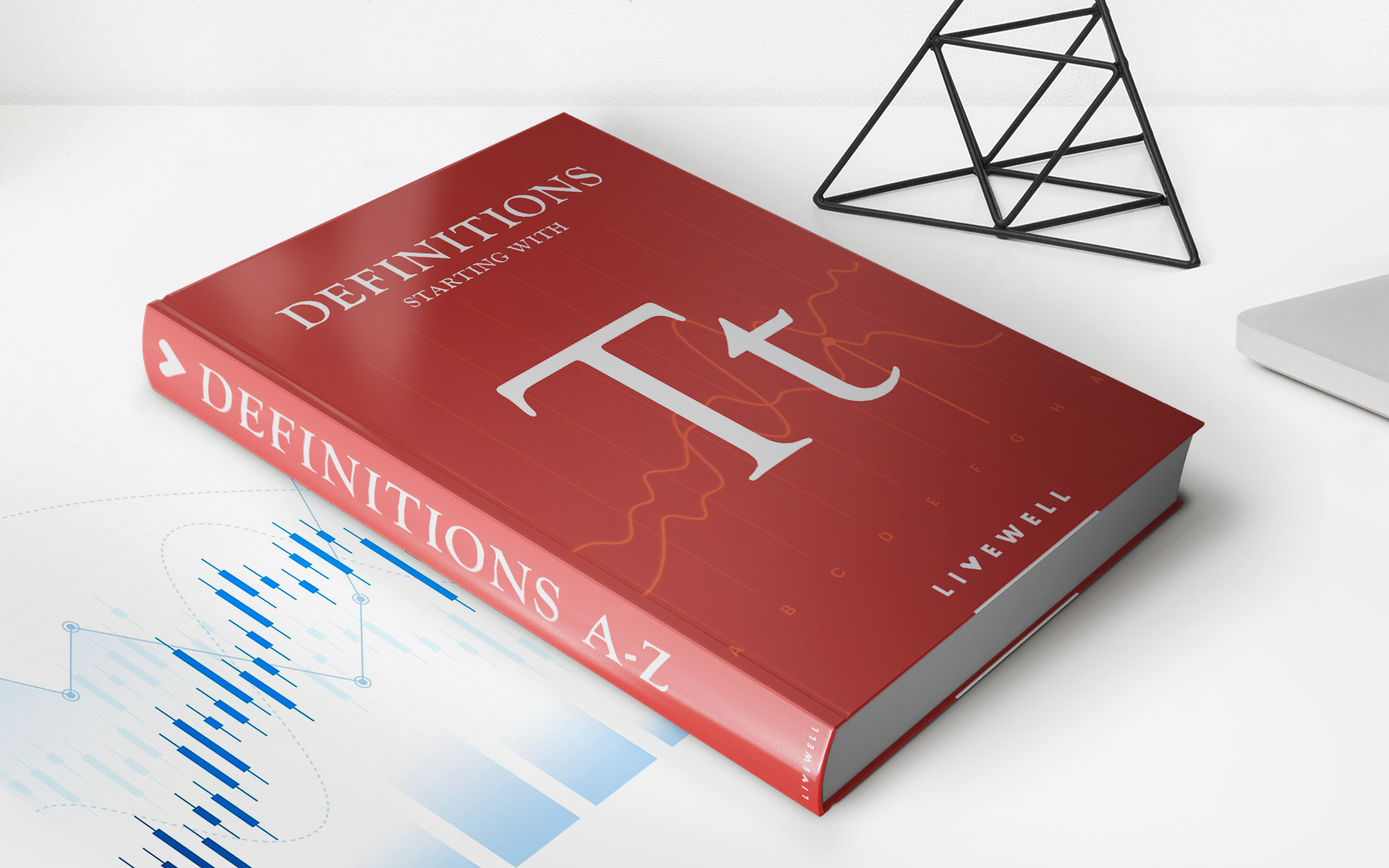

Finance
What Does It Mean To Max Out Your 401K
Published: October 18, 2023
Understanding the concept of maxing out your 401K and its impact on your finance. Discover how to make the most of this powerful retirement savings tool.
(Many of the links in this article redirect to a specific reviewed product. Your purchase of these products through affiliate links helps to generate commission for LiveWell, at no extra cost. Learn more)
Table of Contents
Introduction
Planning for retirement is an essential aspect of financial wellbeing. One of the most popular retirement savings tools is the 401(k) plan, offered by many employers. It allows employees to contribute a portion of their salary towards retirement savings, often with the added benefit of employer matching contributions.
However, simply enrolling in a 401(k) plan is not enough to secure a comfortable retirement. It is equally important to maximize the potential of this retirement vehicle by contributing the maximum allowable amount each year. This article explores what it means to “max out” your 401(k) and the potential benefits and drawbacks of doing so.
By understanding how to optimize your 401(k) contributions, you can make the most of this valuable retirement savings tool and potentially achieve financial security in your golden years.
Before we delve into the details, let’s first gain a basic understanding of how a 401(k) plan works and why it is a popular choice for retirement savings.
Understanding the Basics of a 401(k)
A 401(k) is a retirement savings plan that is sponsored by employers and allows employees to save and invest a portion of their salary. It is named after the section of the U.S. tax code that governs it. One of the main advantages of a 401(k) is that contributions are made on a pre-tax basis, meaning that they are deducted from your paycheck before taxes are withheld. This reduces your taxable income, potentially leading to lower income tax liabilities.
Contributions to a 401(k) plan accumulate and grow tax-deferred until you withdraw the funds during retirement. Typically, 401(k) plans offer a range of investment options such as stocks, bonds, mutual funds, and target-date funds. This allows you to customize and diversify your portfolio according to your risk tolerance and retirement goals.
One of the most attractive aspects of a 401(k) plan is employer matching contributions. Some employers match a portion of the employee’s contributions up to a certain percentage of their salary. This matching contribution is essentially free money, and it significantly boosts your retirement savings.
It is important to note that 401(k) plans have contribution limits imposed by the Internal Revenue Service (IRS). These limits determine the maximum amount you can contribute to your plan each year, and they are subject to change. Understanding these limits is crucial when it comes to maximizing your 401(k) contributions.
Now that we have a solid understanding of what a 401(k) plan is, let’s explore the contribution limits and why it is beneficial to strive towards maxing out your 401(k) contributions.
Contribution Limits for a 401(k)
When it comes to maximizing your 401(k) contributions, it is important to be aware of the contribution limits set by the IRS. These limits determine the maximum amount of money you can contribute to your 401(k) plan each year. By understanding and striving to meet these limits, you can make the most of the tax advantages and potential growth opportunities offered by your 401(k) plan.
For 2021, the IRS has set the contribution limit for employees’ elective deferrals at $19,500. This means that you can contribute up to $19,500 of your pre-tax income to your 401(k) account throughout the year. However, if you are aged 50 or older, you are also eligible for catch-up contributions. The catch-up contribution limit for 2021 is an additional $6,500, bringing the total maximum contribution to $26,000 for individuals in this age group.
It is important to note that the contribution limits are subject to change each year, so it is advisable to stay informed about any updates or modifications made by the IRS.
Additionally, it is essential to understand that the contribution limits apply to your individual contributions and do not include any employer matching contributions. Employer matching contributions are separate and do not count towards these limits. This means that you can take full advantage of both your individual contributions and any matching contributions provided by your employer.
Contributing the maximum amount allowable to your 401(k) plan can have significant long-term benefits. By maximizing your contributions, you not only benefit from the tax advantages but also have the potential for substantial growth over time due to compounding interest. The earlier you start contributing and the more you contribute, the more time and opportunity your investments have to grow.
Next, let’s explore the benefits of maxing out your 401(k) contributions and the potential advantages it offers for your retirement savings.
Benefits of Maxing Out Your 401(k)
Maxing out your 401(k) contributions by contributing the maximum allowable amount each year can have numerous benefits for your retirement savings. Here are some compelling reasons why you should aim to maximize your 401(k) contributions:
- Maximizing tax advantages: By contributing the maximum amount allowed to your 401(k) plan, you take full advantage of the tax benefits associated with it. Contributions are made on a pre-tax basis, reducing your taxable income and potentially lowering your overall tax liability.
- Accelerating wealth accumulation: Maxing out your 401(k) contributions allows your investment to grow faster due to the power of compounding. Over time, the compounding effect can significantly increase the value of your retirement savings, helping you build a substantial nest egg.
- Employer matching contributions: Many employers offer a matching contribution program as part of their 401(k) plans. By maxing out your contributions, you maximize the amount of free money provided by your employer. This can have a significant impact on your overall retirement savings.
- Protection from taxes and creditors: Assets held within a 401(k) are protected from taxes until withdrawal, offering you a tax advantage compared to ordinary investment accounts. Furthermore, in most cases, your 401(k) assets are shielded from creditors in the event of bankruptcy.
- Lowering your taxable income: By contributing the maximum amount to your 401(k), you reduce your current taxable income, potentially placing yourself in a lower tax bracket. This can lead to additional tax savings beyond the benefits specific to the 401(k) plan.
- Enhancing retirement readiness: By maxing out your 401(k) contributions, you are taking proactive steps towards building a robust retirement fund. This can provide you with peace of mind, knowing that you are actively working towards a financially secure future.
Maximizing your 401(k) contributions offers a range of benefits that can have a lasting impact on your retirement savings. However, it is essential to consider potential drawbacks and alternative investment options before committing to maxing out your 401(k). We will discuss these factors in the upcoming sections.
Strategies to Max Out Your 401(k)
Maximizing your 401(k) contributions may seem like a daunting task, but with the right strategies, it can become an achievable goal. Here are some effective strategies to help you maximize your contributions and make the most of your 401(k) plan:
- Start early: The earlier you start contributing to your 401(k), the better. Take advantage of the power of compounding by beginning to contribute as soon as you are eligible. Even small contributions made early on can grow significantly over time.
- Contribute consistently: Set up automatic contributions from your paycheck to ensure a consistent flow of savings into your 401(k) account. This method allows you to easily manage your contributions and ensures that you don’t miss out on any opportunities to maximize your savings.
- Take advantage of employer matching: If your employer offers a matching contribution program, contribute at least enough to receive the maximum match. This is essentially free money that boosts your retirement savings without any additional effort on your part.
- Adjust your lifestyle: Consider making adjustments to your lifestyle to free up more funds for your 401(k) contributions. This may involve cutting back on non-essential expenses or finding ways to increase your income. Small sacrifices in the present can lead to significant gains in the future.
- Utilize catch-up contributions: If you are aged 50 or older, take advantage of the catch-up contribution option. This allows you to contribute additional funds to your 401(k) account, maximizing your savings potential and making up for any lost time in your retirement planning.
- Reassess your investment allocations: Regularly review and adjust your investment allocations to ensure they align with your long-term goals and risk tolerance. Consider diversifying your portfolio and seeking professional advice if needed to optimize your investment strategy.
- Take advantage of windfalls: If you receive unexpected income, such as a bonus or tax refund, consider allocating a portion or all of it towards your 401(k) contributions. This can provide a significant boost to your savings and help you reach your maximum contribution limit.
- Reduce unnecessary fees: Review the fees associated with your 401(k) plan and seek options with lower expense ratios. Higher fees can eat into your overall returns over time. Consider switching to lower-cost investment options within your plan to maximize your savings.
Implementing these strategies can help you maximize your contributions and take full advantage of the benefits offered by your 401(k) plan. However, it’s important to consider potential drawbacks and explore alternative retirement investment options. We will explore these aspects in the next sections.
Potential Drawbacks of Maxing Out Your 401(k)
While maximizing your 401(k) contributions offers numerous benefits, it’s important to consider potential drawbacks that may arise from solely focusing on this retirement savings vehicle. Here are some potential drawbacks to keep in mind:
- Limited investment options: 401(k) plans typically offer a limited selection of investment options. This can restrict your ability to diversify your portfolio or invest in specific assets that may offer higher potential returns.
- Early withdrawal penalties: Contributions to a traditional 401(k) are tax-deferred, meaning that any early withdrawals before the age of 59 ½ may be subject to income taxes and an early withdrawal penalty of 10%. This penalty can eat into your savings if you need to access the funds before retirement.
- Income restrictions: High-income earners may face limits on their ability to contribute to a 401(k) plan. In some cases, these restrictions may prevent individuals from maximizing their contributions, potentially limiting their retirement savings potential.
- Lack of flexibility: Once you contribute funds to your 401(k), they are generally locked in until retirement age. This lack of flexibility can be a disadvantage if you have other financial goals or unexpected financial needs that require immediate access to your funds.
- Increased tax burden in retirement: While contributing to a 401(k) lowers your taxable income during your working years, withdrawals during retirement are subject to income tax. If you anticipate being in a higher tax bracket during retirement, this could result in a larger tax burden.
- Changes in tax laws: Tax laws can change over time, potentially impacting the tax advantages associated with your 401(k) contributions. It’s important to stay informed about any tax law changes and consider the potential impact on your retirement savings strategy.
Considering these potential drawbacks can help you make an informed decision about how much to contribute to your 401(k) and whether alternative retirement investment options should be considered. It’s important to find the right balance between maximizing your 401(k) contributions and exploring other investment avenues that align with your financial goals and risk tolerance.
Alternative Retirement Investment Options
While maximizing your 401(k) contributions is a popular retirement savings strategy, it’s important to explore alternative investment options to diversify your portfolio and potentially enhance your retirement savings. Here are some alternative retirement investment options you may consider:
- Traditional or Roth IRAs: Individual Retirement Accounts (IRAs) offer tax advantages similar to 401(k) plans. Traditional IRAs allow for tax-deductible contributions, while Roth IRAs provide tax-free withdrawals in retirement. IRAs offer a wider range of investment options and flexibility in contribution limits compared to 401(k) plans.
- Health Savings Accounts (HSAs): If you have a high-deductible health insurance plan, HSAs can be a powerful retirement savings vehicle. Contributions are tax-deductible, earnings grow tax-free, and withdrawals for qualified medical expenses are tax-free. HSAs offer triple tax advantages, making them a valuable addition to your retirement savings strategy.
- Taxable brokerage accounts: Investing in taxable brokerage accounts provides flexibility in terms of withdrawals and no contribution limits. While these accounts do not offer the same tax advantages as retirement accounts, they allow you to invest in a wider range of assets and access your funds at any time without penalties.
- Real estate investments: Investing in real estate properties, such as rental properties or real estate investment trusts (REITs), can be a way to diversify your portfolio and potentially generate passive income during retirement. Real estate investments can offer long-term appreciation and income potential, although they come with risks and require active management.
- Stocks, bonds, and mutual funds: Investing in stocks, bonds, and mutual funds through brokerage accounts or mutual fund companies can provide growth potential for your retirement savings. The key is to select a diversified mix of assets that align with your risk tolerance and long-term goals.
- Annuities: Annuities are insurance products that provide regular income payments, often for the rest of your life. They can be a way to ensure a steady stream of income during retirement. However, it’s important to carefully evaluate the terms and fees associated with annuities before investing.
Remember, the best approach to retirement savings is to have a well-rounded portfolio that combines different types of investment options. A diversified investment strategy not only helps mitigate risk but also offers the potential for increased returns. Consider working with a financial advisor to determine the optimal mix of retirement investment options based on your individual circumstances and goals.
Conclusion
Maxing out your 401(k) contributions can be a powerful strategy for building a comfortable retirement. By understanding the basics of a 401(k), contribution limits, and the potential benefits and drawbacks, you can make informed decisions to optimize your retirement savings.
Contributing the maximum allowable amount to your 401(k) offers numerous advantages, including tax benefits, potential employer matching contributions, and the potential for accelerated wealth accumulation through compounding interest. However, it’s important to be aware of potential drawbacks, such as limited investment options and early withdrawal penalties.
Exploring alternative retirement investment options can complement your 401(k) savings and provide additional diversification for your portfolio. Traditional or Roth IRAs, HSAs, taxable brokerage accounts, real estate investments, stocks and bonds, and annuities are all viable options to consider based on your individual circumstances and financial goals.
Ultimately, the key to successful retirement planning is finding the right balance between maximizing your 401(k) contributions and exploring other investment avenues. Consider working with a financial advisor who can help you create a comprehensive retirement savings strategy tailored to your unique situation.
Remember, the earlier you start saving and the more you contribute, the better position you will be in to achieve your retirement goals. So, take charge of your financial future today by maximizing your 401(k) contributions and exploring the wide array of investment options available to you.














